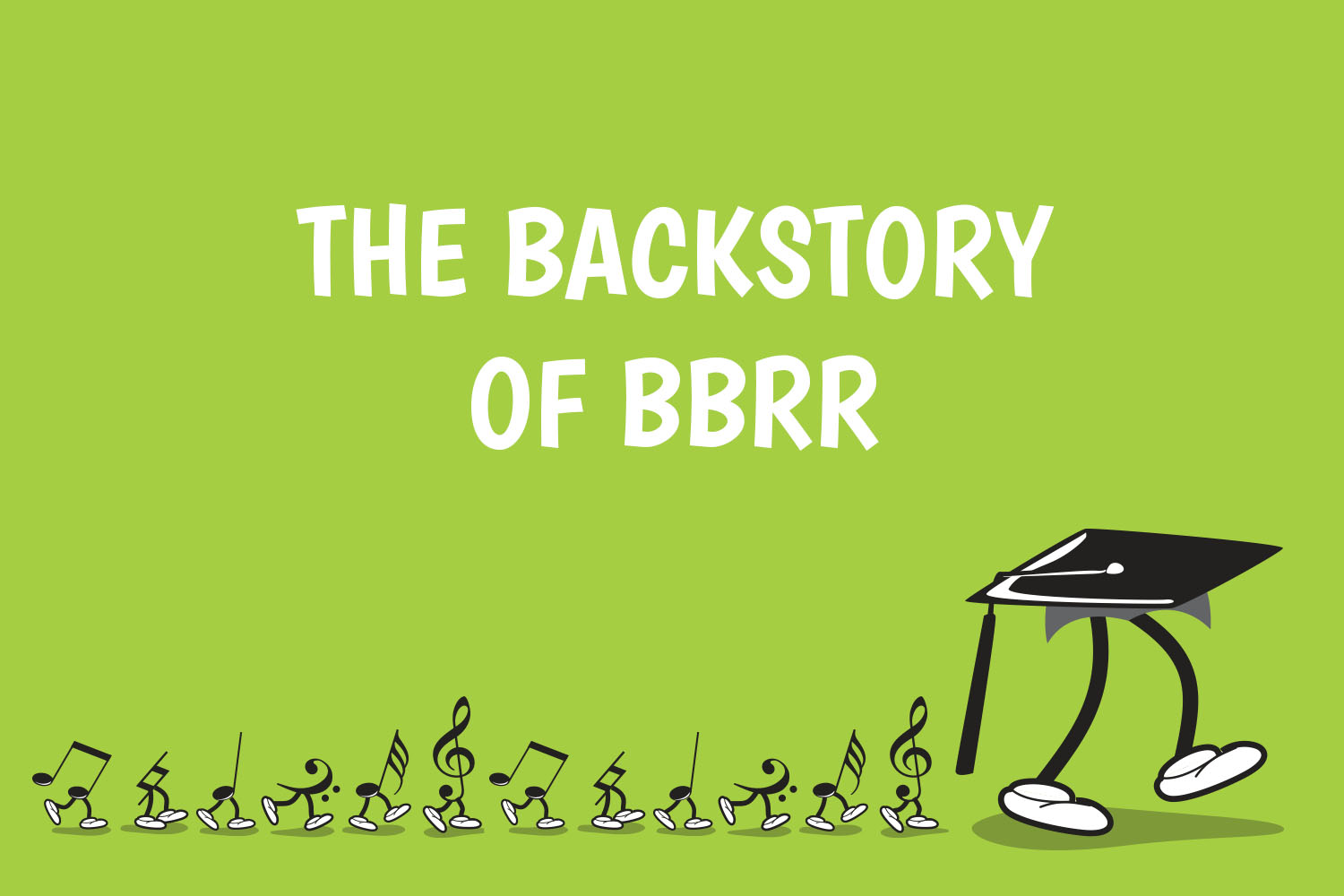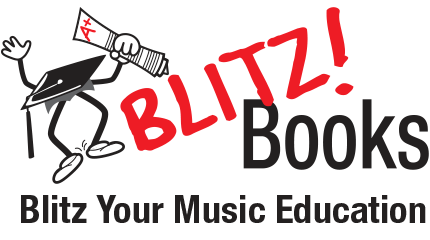The Backstory of BBRR

This is the story of how BlitzBooks Rote Repertoire (BBRR) came to be. It is a weird and wonderful confluence of my exposure to three very significant philosophies/methods in the music world: Piano Safari, Taubman and Suzuki, and how I have combined these with three decades of my own teaching experience to create what I think is a unique approach to repertoire and sight reading.
It all started in March 2017 at the MTNA conference in Baltimore, when I decided to attend a fabulous session called ‘Rote is Not a Four-Letter Word’ (a brilliant title which I have used with permission for a couple of my own sessions, thanks Julie and Katie!), presented by Piano Safari authors and creators Dr Julie Knerr and Katherine Fisher. As I sat listening to them list all the reasons why rote teaching is so good when combined with reading (as opposed to the Suzuki approach, which is entirely imitation-based), I started to think about my 15-year old student Josiah and how he was struggling with piano.
Josiah enjoyed playing piano but hated reading. I, of course, wouldn’t let him bypass the reading and made sure he understood every single element on the page prior to playing it. He did not enjoy practising and whilst he was a very capable pianist once he got going, learning pieces was always a slow and laborious process.
I thought to myself, ‘I am going to put Josiah out of his misery.’
When I returned from Baltimore I started teaching Josiah by rote for some parts of his pieces. That is, I demonstrated and asked him to copy. This kind of went against my grain, but boy oh boy did his progress go through the roof! Suddenly he was flying along, and very happy to play. Lessons were enjoyable again. (All of this got me feeling very guilty about a transfer student I had many years ago, whom I refused to teach by rote.)1
But of course that approach on its own was not holistic enough for me. Josiah needed to learn to read fluently, otherwise how would he ever learn music independently? So, to keep it easy and simple, I whipped out the Piano Safari flashcards and we started going through them. Josiah thought they were soooo much fun and he absolutely flew through them all. When I said ‘see Josiah, you CAN sight read! You can sight read really well!’ he shook his head and said, ‘yeah but those cards aren’t real music they’re just patterns’.
Um, what? Huh??? Josiah didn’t get that reading music is all about reading patterns.
And then I thought: How many other students have this disconnect in their heads? That somehow only sight-reading exercises are made up of patterns, not music in general?
So I started writing pieces for Josiah that were entirely based on patterns. I used complex-to-look-at-but-easy-to-play rhythms and keys. I taught a simplified version of the piece to him by rote, and THEN got him to recognise the patterns in the more advanced version. This WORKED! I also made sure the pieces had a contemporary feel, because let’s face it he’s a teenage boy who loves music but doesn’t have a lot of time and wants to play stuff that sounds good!2
And so BBRR was born. I became obsessed with writing pieces that were highly patterned, engaging for today’s busy youth, and that stimulated sight reading.
Back-tracking a little: during all of this time I was also recovering from my own tendonitis and was seriously looking into Taubman technique. I had some Taubman lessons to get over my injury and for a while could only play very simple pieces in order to concentrate on my (new) posture and hand position. I practised only the really comfortable scales like B major and A flat melodic minor, and I started thinking about how all the beginner repertoire is actually written in very uncomfortable keys like C major and F major, and not only that, how beginner methods are very often based around having both thumbs on middle C, which twists the wrists and is not good for developing pianists.
So this is why I made sure all my pieces were easy and comfortable to play. I picked keys like E Lydian and B flat minor, which minimise twisting. These are not easy keys to sight read or understand, of course! But that didn’t matter, because I was teaching them by rote at first, and THEN getting students to spot the patterns. Students still easily picked up the reading, with their long fingers comfortably positioned over black notes and thumbs on white notes. This meant they were exposed to wonderfully complex keys!3
Added to all of this was my research into the Suzuki Talent Education Method and what Shinichi Suzuki stood for. He observed that since children learn to speak their native language many years before they learn to read or write, it follows that young children should learn to play an instrument well before they read a score. Suzuki students develop an amazing ear and can concentrate fully on their technique as they play. These are wonderful traits, and there is no question that it is so much easier to play beautifully when you’re not bogged down by notation. This is why we should all eventually play pieces from memory!
I took inspiration from this aspect of Suzuki and decided there was no point in trying to make my pieces easy to read, because that usually meant sacrificing a good feel and a good sound. Groovy rhythms are syncopated and complicated-looking; comfortable keys have lots of black notes and therefore complex key signatures or accidentals. But does this mean that young students should not be exposed to this music, just because the notation is beyond their understand at that point? Not at all! All of this can be overcome with a combination of rote teaching (modelling/imitation) and reading.
So that’s the back-story of BlitzBooks Rote Repertoire. At first, I was just composing pieces. But they needed to be taught a special way – this is NOT repertoire that can be simply sent home with students, or taught in a traditional fashion – so I wrote teacher guides, and made videos, and created audio files… then I realised that this all need to be online. So now there is a whole new website with a wealth of material.
There is one final aspect to all of this, which is actually the most important. The way the pieces are presented encourages students to read but ALSO to create their own versions. This is the essence of music! With this series, students can have it all: contemporary pieces that sound interesting, sight reading skills, a solid technique AND improvisation and composition opportunities.
I’m proud of my new project. I’ve been using it with EVERY SINGLE STUDENT. My younger students use it as their repertoire pieces, and my older students love it as quick-study pieces or sight-reading adventures. It has become my go-to lesson activity when students come to lessons unprepared. I think they are wondering what’s up with me, because now I seem so happy when they say they haven’t practised! 😊
You can find out more here:
https://blitzbooks.roterepertoire.com/
[1] 1992: a gorgeous student came to me able to play various intermediate-level pieces (like Burgmuller studies) quite well, but could not read a single note; I am sad to say I made her go back to elementary-level pieces that she could read. She got really bored. Who wouldn’t?
[2] This does not mean he wanted heavy rock or fast music. Josiah’s favourite music is the flowy, ballad-y type. Same for his two younger brothers, whom I also teach. There is no such thing as ‘music for boys’.
[3] As opposed to Book 1 of Suzuki piano, which is almost entirely based in C major.
- 1992: a gorgeous student came to me able to play various intermediate-level pieces (like Burgmuller studies) quite well, but could not read a single note; I am sad to say I made her go back to elementary-level pieces that she could read. She got really bored. Who wouldn’t?
- This does not mean he wanted heavy rock or fast music. Josiah’s favourite music is the flowy, ballad type. Same for his two brothers, whom I also teach. There is no such thing as ‘music for boys’.
- As opposed to Book 1 of Suzuki piano, which is almost entirely based in C major.

Yes, I like what you are doing… but. really? BBRR :))
… brrr (as in shudder) 🙂
Why not B2R2?
LOL
Hahaha thanks Max! Yeah i think I might need to rename this post. However, not to B2R2, people might think it’s some sort of droid reference! 🙂